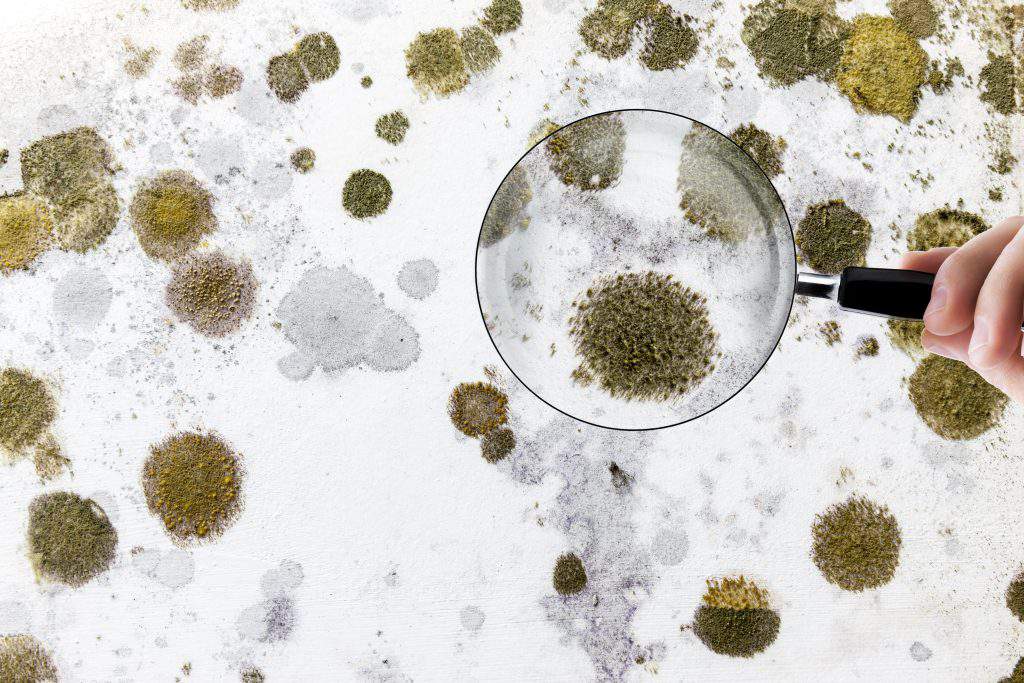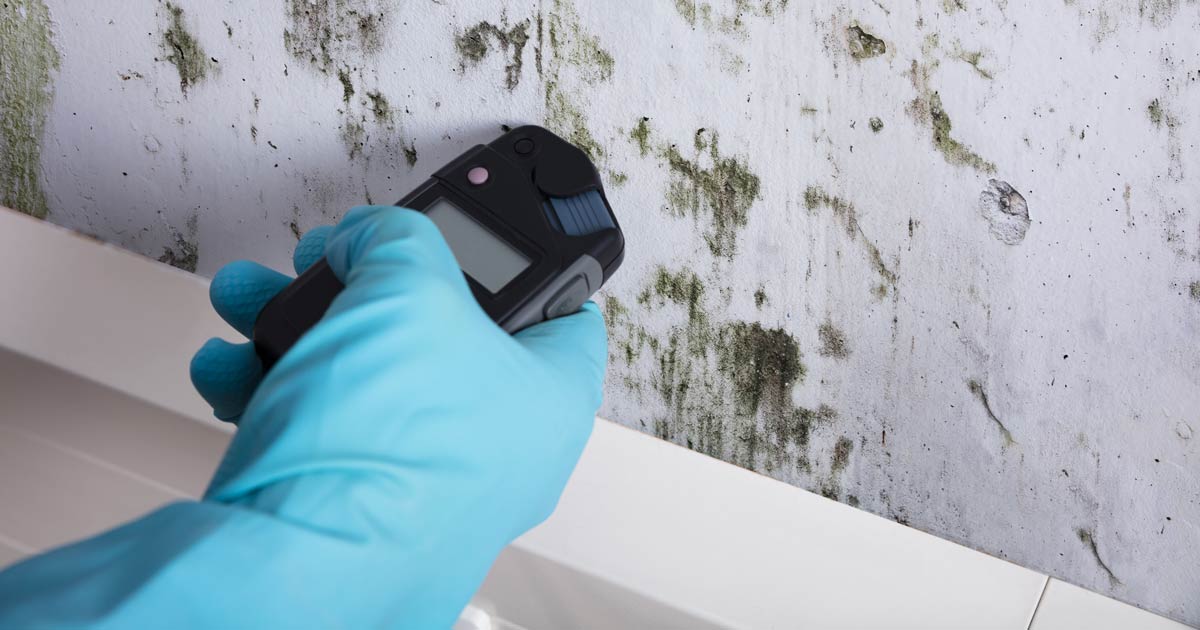Testing Air Quality After Mold Remediation
Professional Tips for Article Mold And Mildew Removal Success
In the realm of mold removal, efficiently eradicating mold and mildew is just half the fight; the true obstacle depends on avoiding its reappearance. Post-remediation initiatives play an essential function in making certain a mold-free environment in the long term. By adhering to expert suggestions and best methods, individuals can secure their areas against mold rebirth and keep a healthy and balanced interior setting. It remains in this stage of the remediation procedure that interest to information and positive procedures absolutely make a difference.
Monitor Moisture Levels Routinely
After finishing mold and mildew removal procedures, maintaining optimum humidity levels is critical to prevent mold and mildew re-growth and ensure a healthy indoor atmosphere. High humidity degrees above 60% produce a conducive atmosphere for mold and mildew to thrive, making normal monitoring a proactive procedure to avoid any future mold and mildew concerns.
Making use of hygrometers or wetness meters can help in properly gauging moisture levels in different areas of the residential or commercial property. These devices give real-time information that enables remediation experts to make educated choices relating to ventilation, dehumidification, and various other necessary actions to keep excellent moisture degrees post-remediation. Additionally, establishing a routine timetable for humidity checks, specifically in risky locations such as washrooms, basements, and kitchen areas, is a proactive approach to mold and mildew avoidance. By constantly checking humidity levels, residential property owners can efficiently mitigate the threat of mold and mildew reoccurrence and keep a healthy indoor setting post-remediation.
Conduct Thorough Inspections Post-Remediation
Complying with the conclusion of mold removal treatments, it is necessary to conduct detailed evaluations to validate the performance of the remediation process. These post-remediation examinations are essential in making sure that the mold and mildew issue has been efficiently addressed and that there is no recurrence or staying mold and mildew development. Inspections ought to be brought out by certified specialists that have knowledge in determining mold and mildew and analyzing interior air top quality.
Throughout these inspections, numerous approaches such as aesthetic assessments, air sampling, and surface area tasting might be used to extensively evaluate the remediated locations. Aesthetic analyses entail a thorough inspection of the premises to look for any kind of noticeable signs of mold growth or water damage. Air tasting assists in figuring out the air-borne mold spore degrees, while surface area tasting can discover mold particles on surfaces.
Implement Appropriate Ventilation Methods
After making sure the effectiveness of the mold and mildew remediation process via complete evaluations, the following important step is to concentrate on implementing appropriate ventilation methods. Adequate air flow is essential in protecting against mold reoccurrence by managing dampness levels and advertising air circulation.
Appropriate ventilation not just aids in avoiding mold and mildew development but likewise adds to the total wellness and comfort of passengers. By making certain appropriate ventilation throughout the property, you can decrease the danger of mold regrowth and produce a much healthier living setting. Normal upkeep of ventilation systems, consisting of cleaning and filter substitutes, is essential to maintaining effective ventilation. Consulting with a/c experts can offer additional insights right into maximizing ventilation techniques for your certain residential or commercial property requirements.

Usage Mold-Resistant Products for Repairs
To enhance the lasting efficiency of mold and mildew remediation initiatives, integrating mold-resistant materials for repair work is vital in reducing the threat of future mold and mildew growth. Mold-resistant materials are designed to stand up to wetness and prevent mold development, making them a vital choice for locations vulnerable to moisture and moisture. When fixing areas impacted by mold, making use of products such as mold-resistant drywall, mold-resistant paints, and mold-resistant caulking can aid avoid mold and mildew recurrence.
Mold-resistant drywall is an exceptional option to typical drywall in areas like basements and restrooms where dampness levels are greater. This type of drywall has an unique coating that resists mold growth also when exposed to damp conditions. Furthermore, using mold-resistant paints having antimicrobial representatives can better hinder mold and mildew growth on wall surfaces and ceilings.
In areas where dampness prevails, such as cooking areas and washrooms, using mold-resistant caulking around tubs, windows, and sinks can help secure out water and prevent mold from holding in splits and holes. By spending in these mold-resistant products during repair services post-remediation, you can substantially minimize the possibility of future mold and mildew problems and maintain a much healthier interior atmosphere.
Maintain Cleanliness and Address Water Issues
Making certain sanitation and immediately dealing with water issues are basic methods to support in safeguarding interior see post spaces from mold and mildew reinfestation. After mold remediation, it is critical to preserve a clean atmosphere to avoid the regrowth of mold and mildew (Post Remediation Inspection near me). Normal cleaning, cleaning, and vacuuming can help eliminate any sticking around mold spores and stop them from proliferating and resolving. Additionally, maintaining indoor rooms dry and resolving any water problems promptly is necessary in mold and mildew prevention. Leakages, water breach, or high moisture levels can develop the best breeding ground for mold and mildew, so it is important to deal with any water-related issues immediately.
To maintain cleanliness, take into consideration utilizing HEPA filters in vacuum cleaners and air cleansers to catch mold and mildew spores and stop their blood circulation in the air. Making sure appropriate air flow in areas susceptible to moisture buildup, such as restrooms and kitchens, can aid maintain moisture levels in check. By staying vigilant concerning sanitation and resolving water problems promptly, you can efficiently stop mold reinfestation and preserve a healthy indoor setting.
Final Thought

In the world of mold and mildew removal, effectively getting rid of mold and mildew is just half the battle; the true obstacle exists in preventing its reappearance. After finishing mold and mildew removal treatments, maintaining optimal humidity levels is crucial to avoid mold re-growth and guarantee a healthy indoor environment. High humidity levels over 60% create a conducive environment for mold and mildew to grow, making regular keeping track of a positive step to prevent any type of future mold problems.
To improve the long-lasting effectiveness of mold and mildew remediation efforts, including mold-resistant materials for repair work is vital in minimizing the threat of future mold growth. After mold and mildew removal, it is important to official statement keep a tidy atmosphere to stop the regrowth of mold.